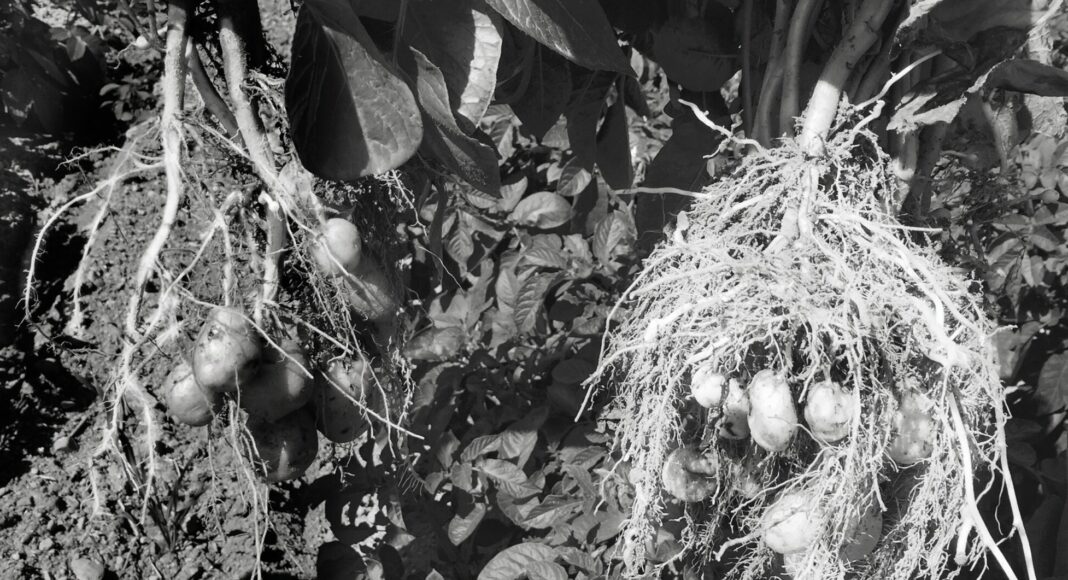The parallels between where we are in the potato industry today compared to where California’s strawberry industry was in the 1950s are quite amazing. Strawberries are very sensitive to verticillium – same as potatoes. Through the 1940s, strawberry growers could achieve just one or two crops on a given piece of ground, after which their yields would crash due to verticillium. Because they had no effective means to fight the disease, the strawberry growers tried to outrun verticillium by dumping on high amounts of nitrogen to offset the effects of root destruction. That was minimally effective and caused major problems including nitrates in well water. So, strawberry growers had no choice but to seek fresh land. Theirs became an unsustainable cycle of trying to find new land every two years.
In the early 1950s, the introduction of the fumigant chloropicrin proved game changing, suppressing verticillium and altering the industry almost overnight. Suddenly, strawberry growers didn’t need to chase land because they were able to suppress disease, and their yields went through the roof.
A handful of years later, methyl bromide came onto the scene. In addition to it being a fungicide, it proved a good nematicide and herbicide, so the market moved in that direction. In the 1990s, the Montreal Protocol forced methyl bromide off the market due to concerns about its ozone depleting effect. Chloropicrin and chloropicrin/1,3-dichloropropene mixtures stepped smoothly back in. The strawberry industry got back on track, and to this day, California remains the biggest producer of strawberries in the world.
Currently, we in the potato industry are in the equivalent of early 1950’s-era strawberry production. We’re using production systems that facilitate the proliferation of tired soils and the growth of verticillium – potatoes’ number one pest. What are growers’ options? Metam sodium is effective on verticillium, but may not always be effective enough: it helps a grower get through a season but, by the end of the season, disease levels can build up again and the field is reinoculated with the pathogen. To manage, growers are seeking out new land, just as strawberry growers did in the 1940s and early 1950s. That puts huge pressure on land use and the environment. In addition, growers are throwing more nitrogen at their potato fields to offset root loss, exactly as strawberry growers did 70 plus years ago.
There is a solution that can revolutionize the potato industry just as it did the strawberry industry: chloropicrin (sold as Strike). It’s already been proven in strawberries and it’s easily available, yet it’s a hard switch for potato producers. Old habits die hard. Whereas the strawberry industry was concentrated among a relatively few players in California who could shift to chloropicrin quite nimbly, today’s potato industry is an international crop with various ideas on how to suppress disease.
Do I think chloropicrin is coming in potatoes? Absolutely. The time is now to take advantage of what the strawberry industry has already learned to benefit the long-term sustainability of our industry.








